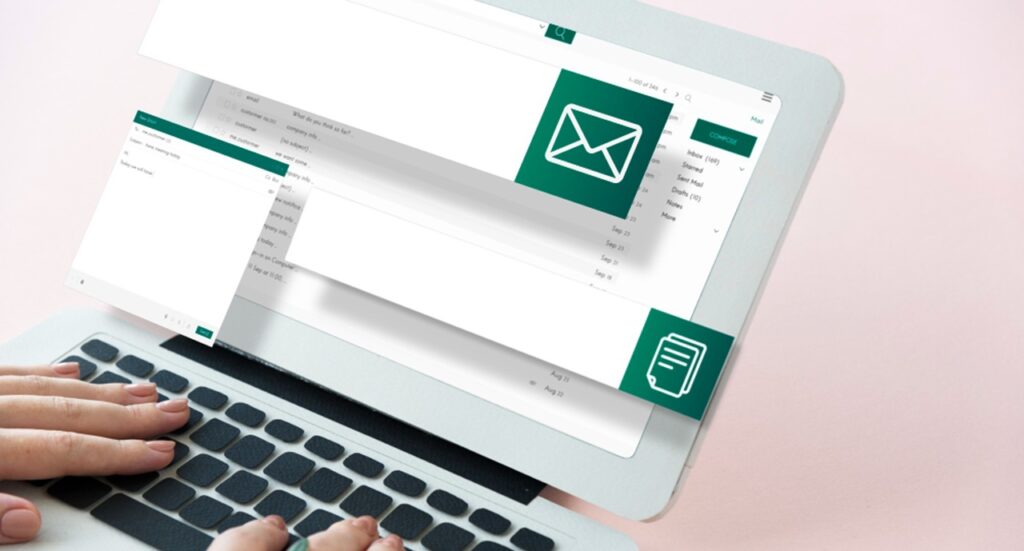Most backlink requests are ignored — not because the offer is bad, but because the email is. Strong outreach email templates can be the difference between landing a high-authority link and ending up in the trash folder. This article breaks down five proven templates that actually work, with practical tips on when and how to use them.
You’ll learn what makes an outreach message effective, how to avoid common mistakes, and how to test and measure success. If you’re serious about link building, keep reading — the right email could open the door to your next big opportunity.
Why Link Building Email Templates for Outreach Matter
Link building takes time, and sending every email from scratch doesn’t help. Templates give you something to work with — so you’re not starting from scratch every time. They help you get the message across without overthinking it or sounding like a robot.
They also keep things simple when you’re working with others. If your team’s using the same formats, it’s easier to stay on the same page and keep the quality consistent — without losing that personal touch.
Here’s how a good outreach templates examples helps:
- Cuts down the time you spend drafting the same message;
- Keeps your tone consistent, even across a team;
- Makes it easier to personalize without rewriting everything;
- Helps your emails look clean and land in the inbox;
- Gives you something you can test and tweak as you go;
Templates don’t replace effort — they just make it easier to focus on what actually works.
Key Elements of Effective Outreach Email Templates
Not all cold emails are bad — just the ones that feel cold. A strong backlink outreach email template strikes the right balance between being direct and being human. Before you send anything, make sure your template covers the basics that actually get people to read and respond.
What to include in every great template:
- A clear subject line — It should be honest, specific, and not look like spam. This is your first (and maybe only) chance to get noticed.
- A personal opener — Show you’ve done your homework. Mention something specific about their site, content, or recent work.
- A reason to care — Explain why you’re reaching out — and why it’s relevant to them, not just to you.
A/B Test Your Email Template
No single guest posting email template works for everyone. What sounds great to you might not land with someone else — which is why testing is key. A simple A/B test lets you compare different versions of your email to see which one gets more opens, clicks, or replies.
You don’t need fancy software to start. Try changing just one thing at a time — like the subject line or opening sentence — and send each version to a small group. Over time, you’ll learn what actually gets attention and what gets ignored.
Template 1: The Personalized Pitch for High-Quality Backlinks
Honestly, most link building outreach templates feel like spam — even when they aren’t. This one works because it doesn’t try too hard. No big pitch, no weird flattery — just a quick note that actually connects to their work. Feels more like a real message than a tactic, which is exactly the point.
Example:
Subject: That part about [topic] really stuck
Hey [first name],
I was reading your post on [article title] earlier and just… Yeah, that part about [put specific detail] hit different. Super clear and relevant to something I’ve been working on.
I put together a piece on [your topic] — different angle, but feels like it lines up with what you covered. Thought it might be worth a look if you’re ever updating the post or just collecting sources.
Anyway, here’s the link:
[put URL]
No stress, if not — just figured I’d send it your way.
[your name]
Template 2: The Guest Post Outreach Email
You can tell when someone’s just blasting the same pitch to every site — and most people tune it out. This one’s more like a quick nudge. No big pitch, no pressure — just a simple ask, in case it clicks.
Example:
Subject: Quick idea — if you’re into guest posts
Hey [first name],
Was reading your post on [put article title here] earlier — that part about [put specific point here] kinda stopped me mid-scroll. Really solid.
Not totally sure if you ever run guest posts, but I’ve been writing about [put topic here] and had an idea that might fit with your stuff. Happy to send more if you’re open to it — or not, no worries.
Figured I’d ask just in case.
[your name]
It doesn’t oversell. It doesn’t assume anything. Just a short, human message — and that’s exactly what makes it stand out from the usual backlink request email template noise.

Template 3: The Broken Link Building Strategy
Sometimes the best way to get a link is to not ask for one — at least not right away. This type of outreach works because it’s low-pressure and actually helpful. That’s real email outreach for backlinks — casual, useful, and easy to respond to.
Example:
Subject: Quick heads-up — broken link in [put article title here]
Hello [first name],
Just came across your post [put article topic here] — great read. I’ve, noticed one of the links looks broken. The one that pointed to [put broken link context here].
I’ve got something on [put your content topic here] that covers a similar idea. Figured it might be useful if you’re ever updating that page.
Anyway, here’s the link:
[put your URL here]
Thanks for your work. Have a good one.
[your name]
That’s the kind of email outreach for backlinks people don’t immediately delete.
Template 4: The Resource Page Link Request
When the content is actually useful, it’s not a hard sell. It’s just pointing out a match. That’s what a good blogger outreach email template is built for.
Example:
Subject: Possible resource for your page on [put topic here]
Hey [first name],
Was checking out your [put page name or title here] — really solid list.
I put together something on [put your topic here] a little while ago — it covers [put short value point here] and might be helpful for readers looking for [brief benefit].
Here’s the link if you wanna check it out:
[put your URL here]
Totally up to you, just thought it might be a good fit.
[your name]
It’s short, specific, and connected to the page you’re reaching out about. A strong blogger outreach email template like this doesn’t need to convince — it just needs to offer something that makes sense.
Template 5: The Collaboration Proposal Email
Some of the best connections start with a simple message. No pitch, no ask — just an idea that might lead somewhere useful for both sides. Most outreach templates examples don’t leave space for that.
Example:
Subject: Small idea — might be something here
Hey [first name],
I’ve been following your stuff around [put topic here] — really captivating work. I was building something in a similar space and figured it might be worth reaching out.
Just wondering if you’d be open to chatting — maybe there’s room to do something together, whether it’s a shared post, a resource swap, or just kicking around a few ideas.
Totally up to you.
[your name]
It sounds like one person reaching out to another — curious, respectful, and open for some great things. That’s what sets it apart from other outreach templates examples — it doesn’t feel like a template at all.
Tips for Email Outreach Best Practices
You don’t need a complex strategy to write a good outreach email — just a few things that make it feel real, clear, and worth replying to. Here are five tips that actually make a difference:
- Keep it short and easy to scan. People get a lot of emails — stick to a few sentences and break things up so it’s not a wall of text.
- Write like a person — not a pitch. If it sounds too perfect or salesy — it’ll feel automated. Use your normal tone, the way you’d message a peer.
- Make it personal — even just one detail. Mention a specific article, quote, or point from their work — that one line shows you’re not mass-sending.
Simple, clear, and human always wins over perfect but forgettable. Also, short emails tend to work best for outreach — they’re easier to read, faster to respond to, and feel more like a real message than a pitch. Most replies happen when you say less, not more.

Common Mistakes to Avoid in Backlink Outreach
Everyone talks about what to do — but a lot of good emails fail because of small things that turn people off. Here are a few to watch for:
- Sounds like a copy-paste job. If your email feels like it could’ve gone to 50 people — most folks won’t bother replying.
- Takes too long to get to the point. A long intro or too much context makes people lose interest before they even reach the ask.
- Doesn’t actually say what you want.
If your message feels like a hint instead of a clear request — they’ll just skip it. - Comes off a little entitled. Suggesting your link deserves a spot can backfire fast. Keep it respectful and low-pressure.
- Follows up way too much. One reminder is fine. Two is pushing it. More than that, and you’re probably in the spam folder.
A little self-awareness goes a long way — most people respond better when it feels like a real conversation, not a campaign.
Measuring Link Building Success with Outreach Emails
You don’t need a dashboard full of metrics — just a few signals that tell you whether your outreach is actually working. Here are the three that matter most:
Reply rate
If no one’s answering, your message isn’t landing. A decent reply rate (even if it’s a “no”) shows people are at least reading and engaging. If it’s dead silent, your email might be too generic, too long — or just not relevant.
Actual backlinks earned
This is the metric that counts. Out of every 10 emails, how many lead to a live link? Low numbers aren’t always bad — but tracking this helps you compare templates and focus on what works.
Quality of responses
Not all replies are equal. If you’re getting thoughtful messages, opens for future collabs, or “this is great, let me add it” replies — that’s a good sign. If it’s all “thanks, but no” you might be close… But not quite there.
Watch these three, adjust based on results, and you’ll get better with every batch you send.
Conclusions
Outreach doesn’t have to be complicated. If your message is clear, respectful, and sounds like it came from a real person — you’re already ahead. The templates help, but it’s how you use them that makes the difference. Start genuine, stay simple, and keep testing what actually gets people to reply. That’s how the good links happen.
